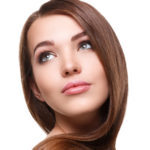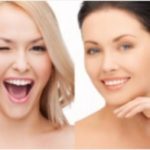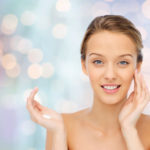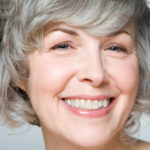Free Consultation in Central London
No obligation appointment with a surgeon
SKIN 101
An Ideal Skincare Regimen
Free Consultation in Central London
No obligation appointment
Click below to contact us
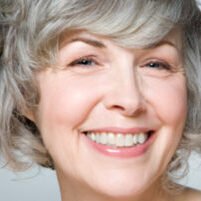
Introduction
This is the final article in our multi-part piece about an evidence-based skincare regimen that will suit almost everyone. In this section, we aim to show what has been scientifically shown to work in achieving and maintaining youthful looking skin.
Here are the shortcuts to the Evidence Based Skincare Regimen Series!
- Cleansing
- Moisturising
- Sun Protection
- Anti-Aging Additions
We aim to provide only products that have been backed by good evidence. You won’t find anecdotal, untested products!
4. Anti-Aging Additions to the Regimen
Do Anti-Aging Creams Work?
One interesting marketing touch is the promoting of creams as anti-ageing. However, the deeper layers of the skin which is most of its thickness, is unreachable by these external substances. This is because the basal layer of the epidermis, by amazing design, is meant to prevent things penetrating the deeper skin. One of the primary functions of skin is to be a barrier to external substances so a basic cream fundamentally cannot change your skin structure to be more youthful.
So how does skin look more ‘anti-aged’ after using an anti-aging cream? As mentioned in the second article of this multi-part series, the cream must have humectants and occlusives. Humectants draws water into the layers under the outer-most skin layer (stratum corneum) and the swelling of this layer plumps out fine lines and wrinkles. This is a temporary property and does not maintain these effects long-term. Nonetheless, a good moisturiser is indispensible as part of a healthy skin regime. As expected, many modern anti-aging creams will contain some element of the below effective ingredients.
So what does work? Below we consider clinically evidenced additions to your skincare regimen that have anti-aging qualities.
Retinoids
Retinoids are an umbrella term for naturally occuring or synthetic compounds with vitamin A activity. They can be classified into four retinoid generations and the most commonly used (with the most published scientific evidence) fall into the first generation. Although typically used for acne, in 1986 Kligman noticed that the acne patients treated with retinoids also experienced less wrinkles and smoother skin. Under the microscope, the thicker skin, reduction of abnormal cells, more even pigmentation and new collagen formation can be seen.
The most commonly used and the one with most published evidence is Tretinoin, which has also been FDA approved for treatment of photoaged skin. The main drawback is the initial skin irritation and sensitivity that all patients will experience to some degree. Usually it sets in within a week and can take several weeks to months to settle completely. Depending on your skin type and sensitivity, the regimen should ideally be tailored specific to the individual. For example, those with sensitive skin may be started on alternate day, lower concentration and build up the tolerance. They may also be started on Adapalene instead of Tretinoin as it has been shown to cause less irritation overall. Otherwise, excess dryness, stinging, redness and itchiness may occur. After 6-9 months of treatment, the frequency of application can be reduced without losing the anti-aging effect. Long term follow-up of over 6 years have shown topical retinoids to be safe.
Antioxidants
Anti-oxidants are frequently added to anti-ageing skin creams. Sometimes they are present in low concentrations to prevent degradation of other ingredients within a skin product. In higher concentrations, there is some preliminary evidence that they help to appreciably improve photo-aged skin. However, there needs to be more robust scientific evidence to back up any widespread advice to use such anti-oxidants in creams regularly.
Vitamins
Vitamins are frequently seen on skincare products. We have already talked about vitamin A derivatives as part of the retinoids section above. Although there are some promising studies done for vitamins B and E, it is vitamin C that has the most clinical evidence. It has been shown to increase the skin's support via increase in collagen and elastic fibres when used topically over skin.
Sun Protection & Exfoliation
Sun protection has already been discussed in our other article. This remains the important last step in any skincare regimen. Despite all we say about the sun being an enemy of youthful skin, light reflecting from the skin surface creates luminance and radiance. This is a crucial attribute of youthful looking skin. With age, the skin cells regenerate slower and a build up of dead skin cells remain on the surface, dulling complexion and creating a dry, roughened look. This is where exfoliation comes in as an addition to the standard routine.
Exfoliation can be chemical (e.g. chemical peels) or physical (e.g. scrubs). They remove the top layers of skin and the amount removed varies with each product. As one would expect, the deeper the exfoliation or peel, the more renewed skin would become after the treatment, but also the greater the side-effects. We like these two posts about exfoliation if you want to read more on this topic – Labmuffin's exfoliation 1 and exfoliation 2.
Depigmentation
One of the most complained about symptom of photoaging is hyperpigmentation. This includes sun spots, freckles, melasma or scar pigmentation. Particularly in asian cultures, whitening or lightening creams have been wildly popular for many years. Although there are topical agents that aim to lighten skin, the best way would be a combination of such depigmenting agents, retinoids, sunscreen and chemical peels.
One of the most common agents used is Hydroquinone (a tyrosinase inhibitor). Its usage can lead to skin irritation and due to safety concerns, it has been banned in Europe for general over-the-counter cosmetic products. More recently Niacinamide (a melanosome transfer inhibitor) has been shown to have similar efficacy, is reversible and side-effect profile is good. Some gentle chemical peels, such as alpha-hydroxy acids have a positive effect on pigmentation as well with few significant side-effects.
As with all skincare that tries to achieve a specific goal, it takes 2-3 months before improvements become stable and noticeable. Anti-aging treatment is a highly individualised process and a deep understanding of your skin is recommended before any treatment is suggested. We hope the above is useful to guide your thoughts as to what is available and effective.
Next Steps...
If you would like a discussion about your skin and want to find out more about how to target signs of aging as well as slow their progression, then contact us for a free, Central London appointment with one of our surgeons.
Read on for the other steps in our Evidence Based Skincare Regimen Series!
- Cleansing
- Moisturising
- Sun Protection
- Anti-Aging Additions
References
McCook JP. Topical Products for the Aging Face. Clin Plast Surg. 2016 Jul;43(3):597-604.
Riahi RR, Bush AE, Cohen PR. Topical Retinoids: Therapeutic Mechanisms in the Treatment of Photodamaged Skin. Am J Clin Dermatol. 2016 Jun;17(3):265-76.
Rivers JK. The role of cosmeceuticals in antiaging therapy. Skin Therapy Lett. 2008 Nov-Dec;13(8):5-9.
Ramos-e-Silva M, Celem LR, Ramos-e-Silva S, Fucci-da-Costa AP. Anti-aging cosmetics: facts and controversies. Clin Dermatol. 2013 Nov-Dec;31(6):750-8.
Glaser DA, Rogers C. Topical and systemic therapies for the aging face. Facial Plast Surg Clin North Am. 2001 May;9(2):189-96, vii.
Commander SJ, Chang D, Fakhro A, Nigro MG, Lee EI. Noninvasive Facial Rejuvenation. Part 1: Patient-Directed. Semin Plast Surg. 2016 Aug;30(3):129-33.
Nolan KA, Marmur ES. Over-the-counter topical skincare products: a review of the literature. J Drugs Dermatol. 2012 Feb;11(2):220-4.
Desmedt B, Courselle P, De Beer JO, Rogiers V, Grosber M, Deconinck E, De Paepe K. Overview of skin whitening agents with an insight into the illegal cosmetic market in Europe. J Eur Acad Dermatol Venereol. 2016 Jun;30(6):943-50.
Popular Topics
How to optimise your skin consistently using robust medical evidence, rooted in science.
Avoid fads and be wise to extravagant marketing.
The Needle & Knife
With so many options for facial rejuvenation, how do surgeons choose the right procedure for our patients?
What Ages Skin?
We look at the main influences that have been shown to significantly affect the way and rate our skin ages.
1. Cleansing
Understand your cleansers and what works well for different skin types
2. Moisturising
Understand your moisturisers and what is most appropriate for your skin
3. Sun Protection
Understand why sun protection is one of the most important aspects of skincare
4. Anti-Aging
Scientifically proven anti-aging products




